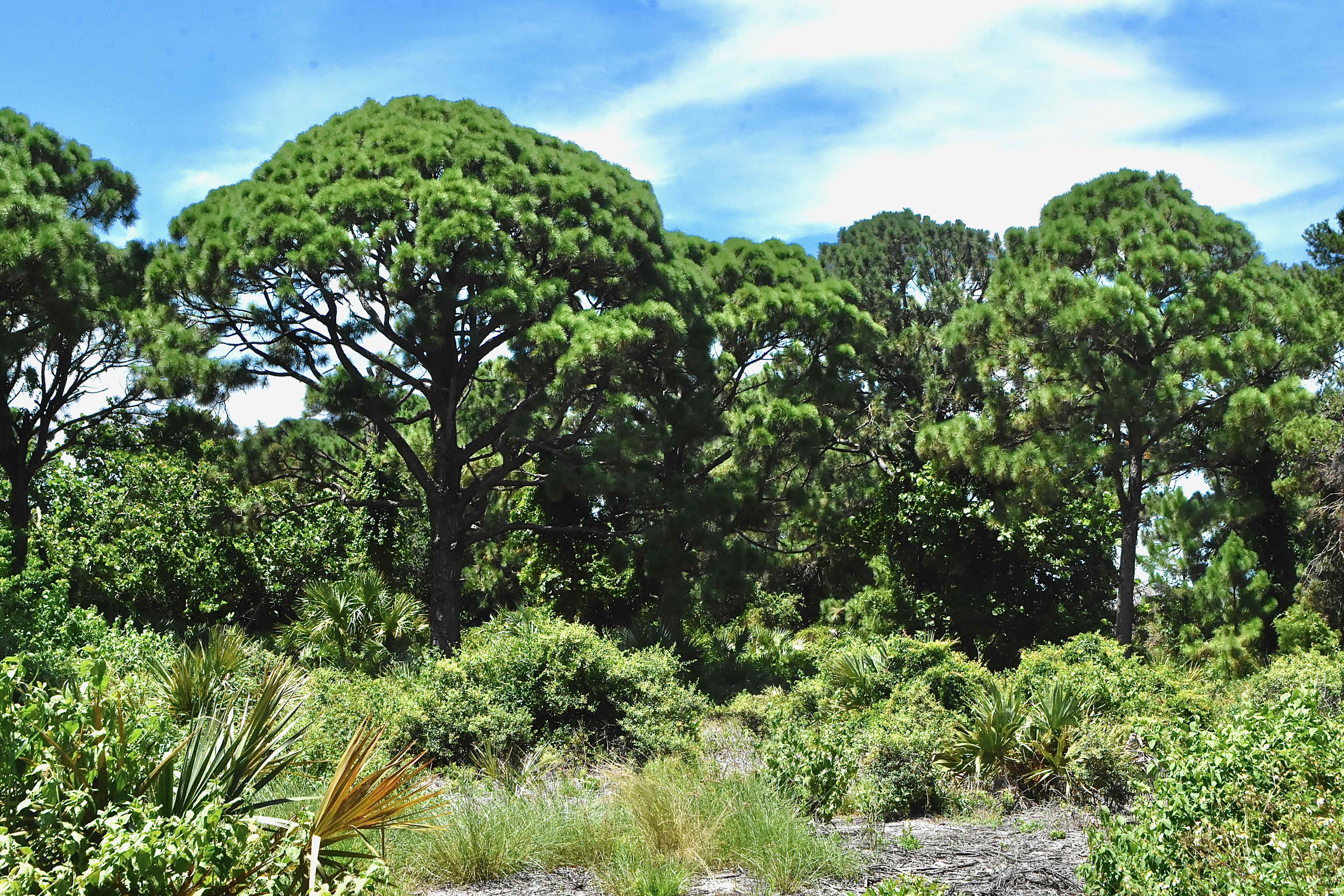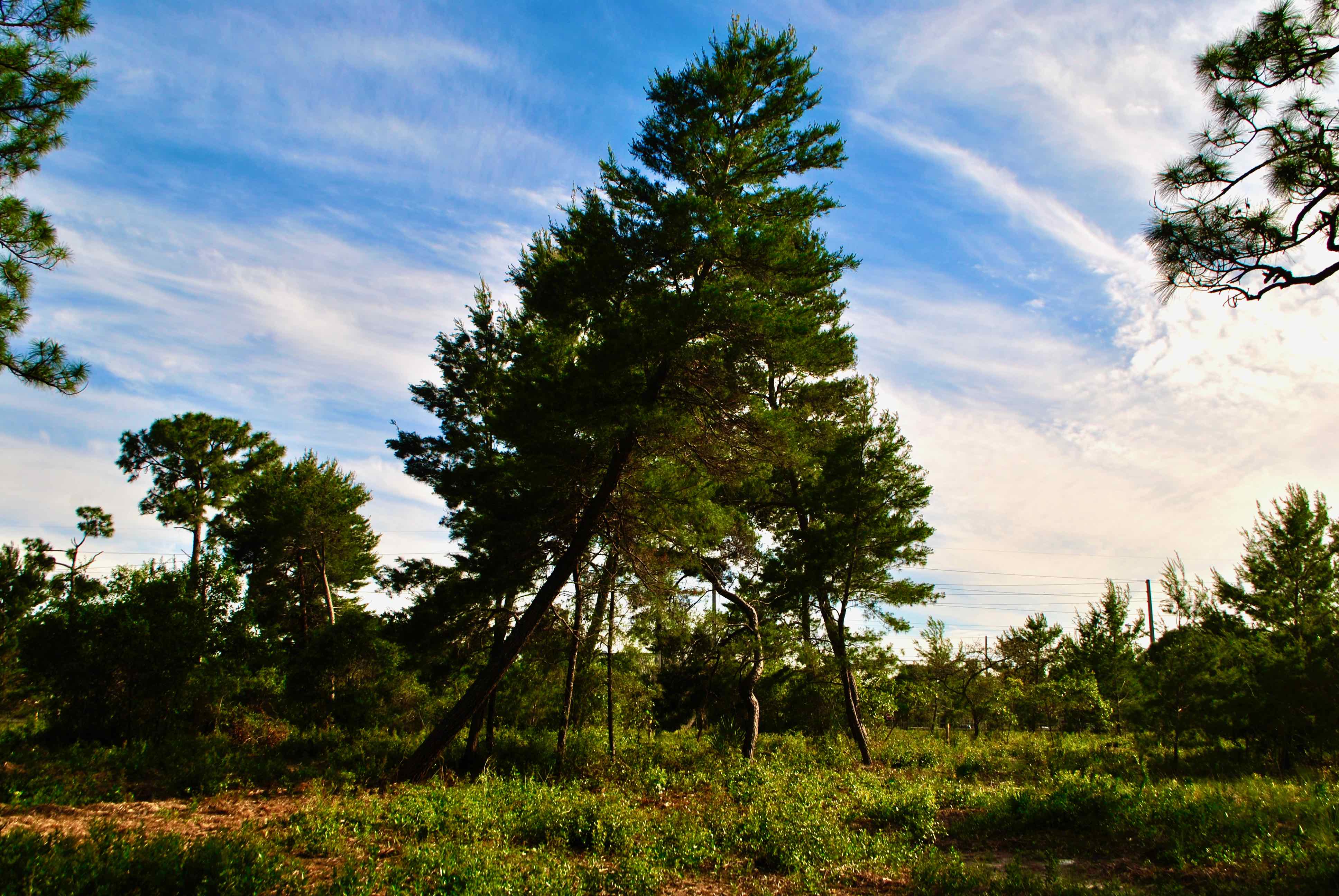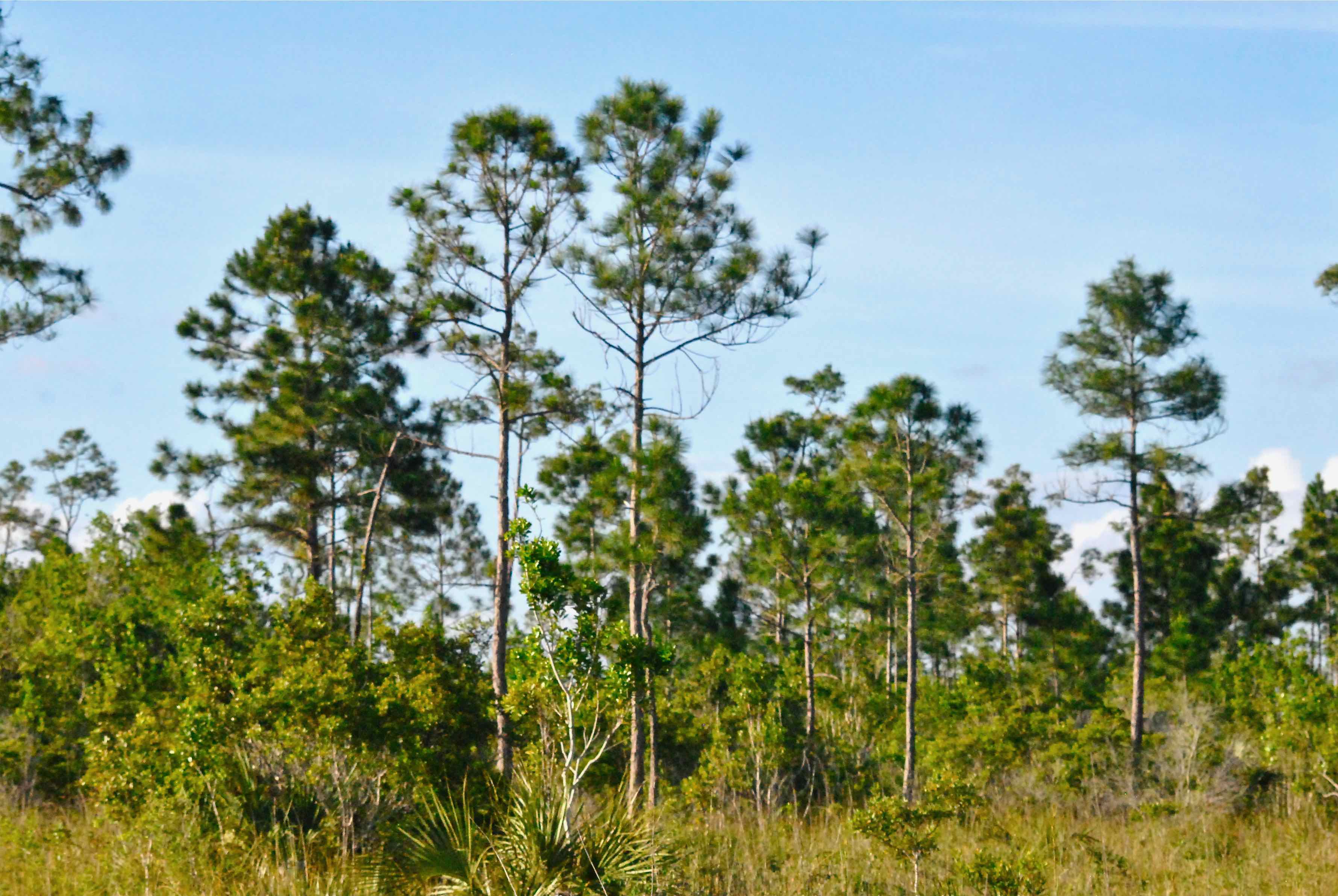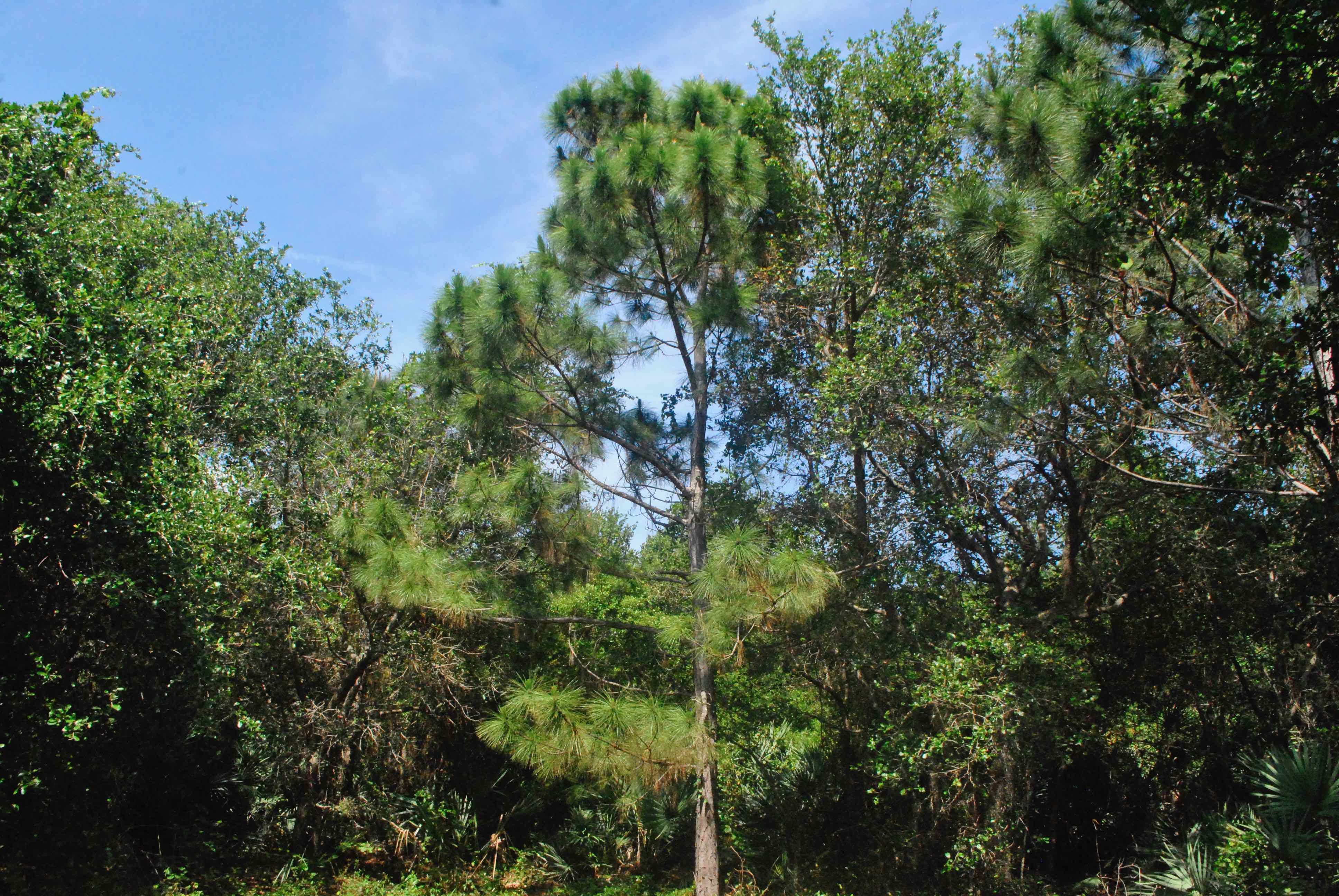
Pines, photographed at Seacrest Scrub Natural Area, Boynton Beach, Palm Beach County, in January 2020.
Pines are among the oldest tree forms on the planet and among the most dominant in Florida. Worldwide, there are something like 120 accepted species of pines, of which three are native to South Florida: the South Florida slash pine (aka Dade County pine), the sand pine and the longleaf pine, rare here but abundant elsewhere in the Sunshine State.
Both sand and slash pines play vital roles ecologically in South Florida, providing food and shelter to a host of animals; slash pines also have been economically important historically because of their highly durable wood.
So what are pines? First, they are part of a group of plants called gymnosperms that reproduce via cones rather than flowers. There are three types of gymnosperms native to South Florida, cypress, cycads (which includes coontie) and pines. These are the oldest seed-bearing plants, dating back 300 million years to the Pennsylvanian period. Secondly, they are part of group of plants called conifers that are cone-bearing, woody and usually trees. The tallest, oldest, thickest trees in the world are confers. They are wind pollinated, and their seeds are "naked." The group includes cypress and pines.
Finally, there is Pinaceae, the pine family. The name itself refers to one of the family's most distinguishing features: resin, a sap-like, dense substance that pines possess in large quantities. It is not water soluable and doesn't carry nutrients but rather protects the tree from insect damage and disease. Look where a branch has broken off the trunk and you'll see the sticky stuff oozing out. Resin gives old-growth South Florida slash pines its durability; pine tar, used for sealing wooden boats, and turpentine are products of resin.
Other features that make a pine a pine: their needles come in bundles of two to five called fascicles and they tend to have coarse, scaley bark. So how do you tell the three South Florida pines apart? Here's a quick and easy guide:
— Sand pines, Pinus clausa, tend to grow in sandy habitats toward the coast, scrubs and dunes, where they're often the dominant species. Their needles are much shorter than either slash pines or longleaf pines and the bark is much finer than slash pines. Their vegetation is much fuller than slash pines, with branches along the length of the trunk.
— South Florida slash pines, Pinus Elliotti var Densa, have orange to brown bark broken into large scales. The needles are seven to 13 inches long and come mostly in fascicles of two. Slash pines lose their lower branches as they mature, giving them kind of a lollypop look — a long straight trunk and foliage concentrated near the top.
— Longleaf pines, Pinus palustris, have needles that mostly come in fascicles of three. The needles are as long or even longer than slash pines, and the bark is less scaley. It is, by far, the rarest in the region of the three, though much more north of here.
For what it's worth, the seemingly ubiquitous Australian pine isn't a pine at all, nor is it native to Florida (and it's technically not even Australian.)



